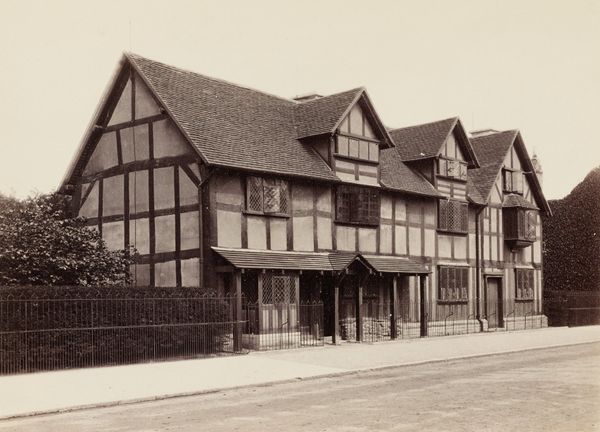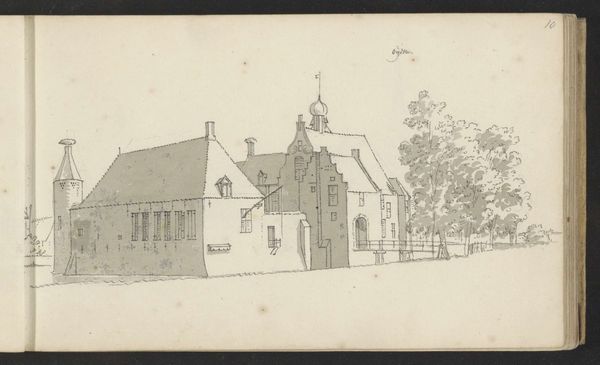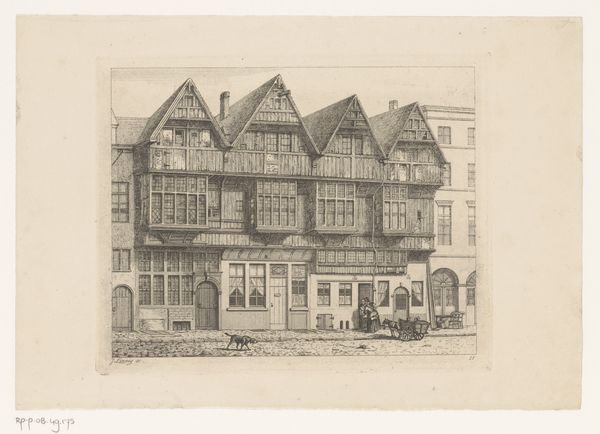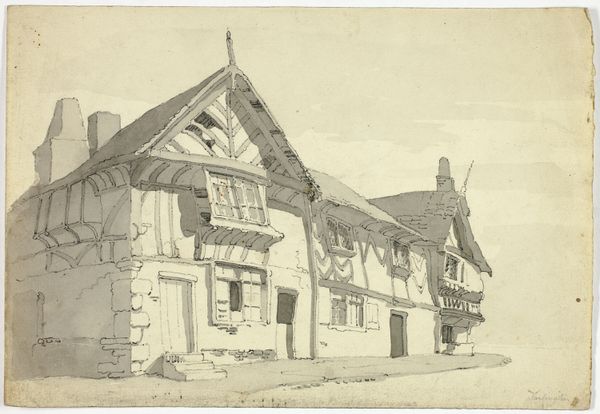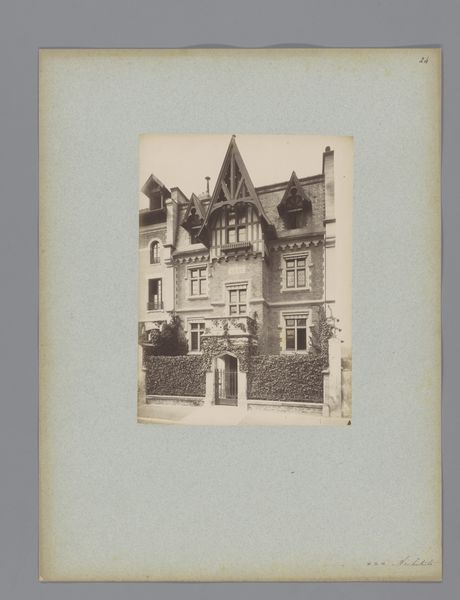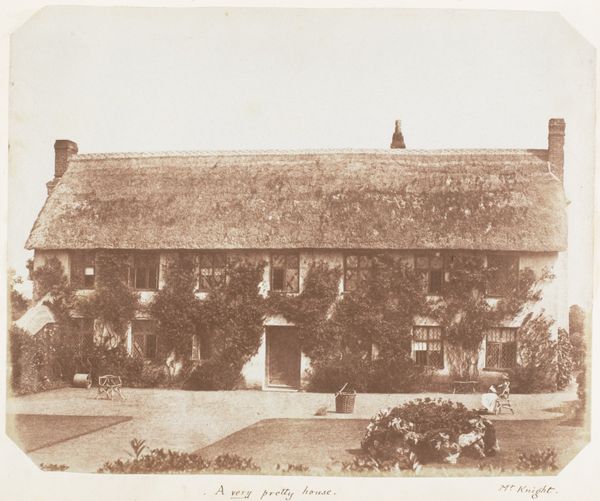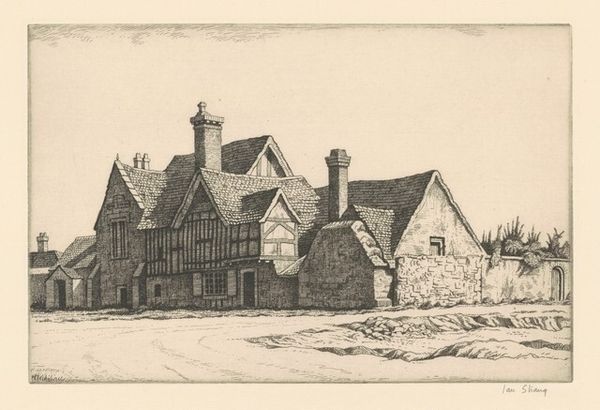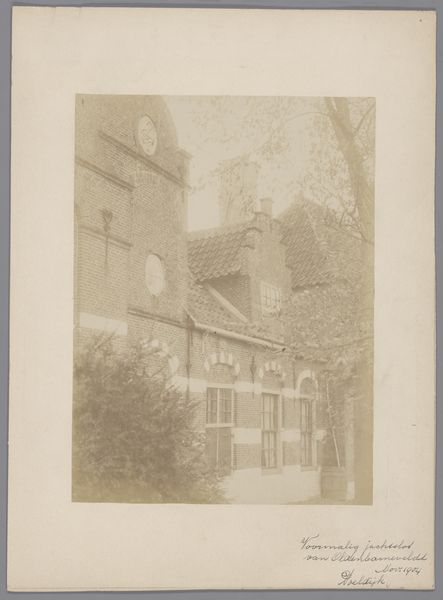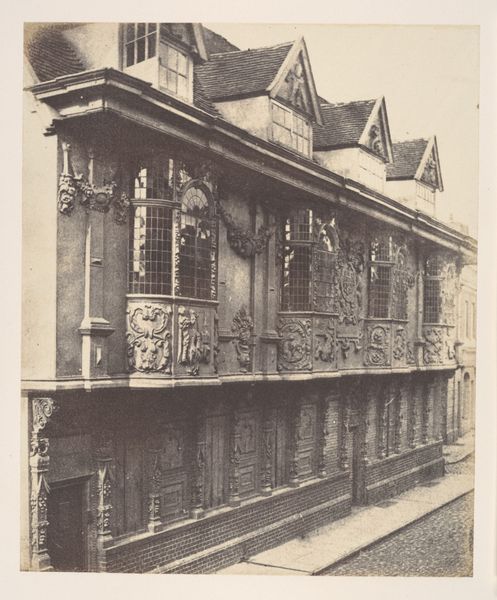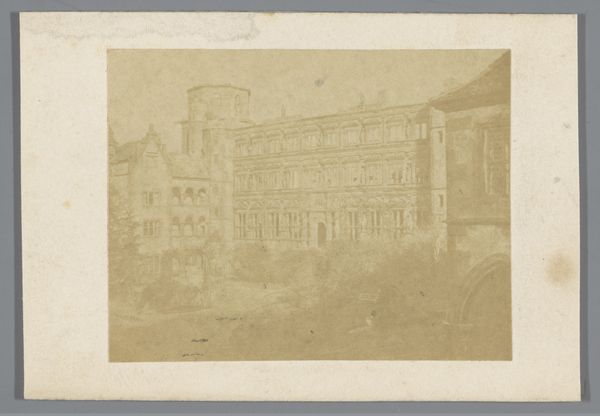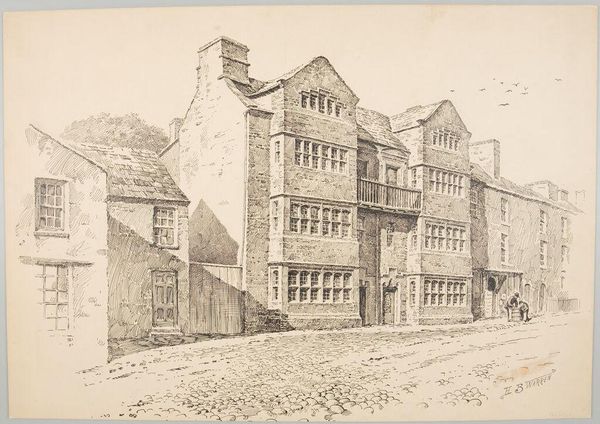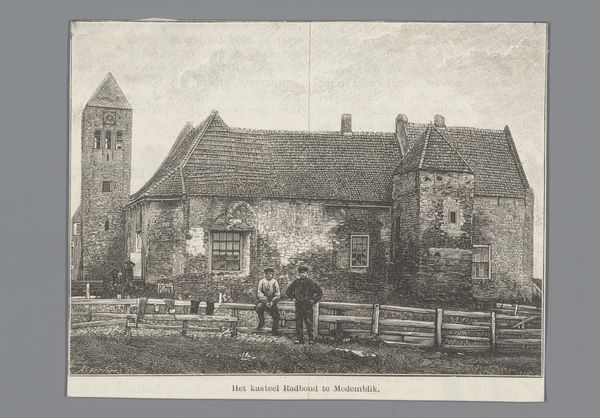
Geboortehuis van William Shakespeare aan Henley Street in Stratford-upon-Avon 1890 - 1905
0:00
0:00
print, photography, albumen-print
#
amateur sketch
#
light pencil work
#
pictorialism
# print
#
pencil sketch
#
sketch book
#
incomplete sketchy
#
landscape
#
photography
#
personal sketchbook
#
sketchbook drawing
#
cityscape
#
watercolour illustration
#
sketchbook art
#
watercolor
#
albumen-print
Dimensions: height 74 mm, width 108 mm
Copyright: Rijks Museum: Open Domain
This image of William Shakespeare's birthplace in Stratford-upon-Avon is rendered in cyanotype, an early form of photography known for its distinctive blue tint. The cyanotype process, invented in the 19th century, involves coating paper with iron salts and exposing it to ultraviolet light, creating a print directly from a negative. This technique was relatively simple and inexpensive, making it popular for architectural and botanical documentation. The sharp lines and tonal range capture the texture of the building's timber frame, brick, and tiled roof. You can also clearly see the patterns and details of the building's facade. Though anonymous, the photographer has captured a historical site with a technology that democratized image-making. By using easily accessible materials, the photographer presents Shakespeare's legacy through a lens of materiality, reminding us that even cultural icons are rooted in everyday processes.
Comments
No comments
Be the first to comment and join the conversation on the ultimate creative platform.
